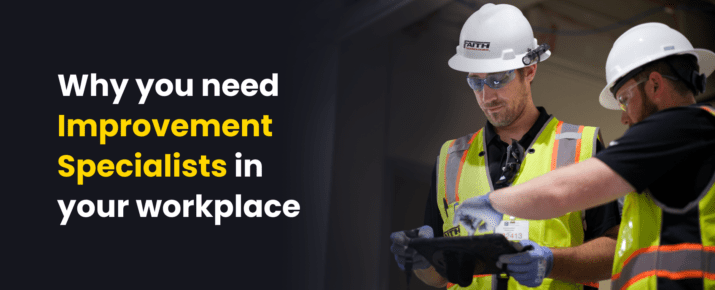Frontline workers want flexibility too – here’s how to get it right
World Of Work | By | 29 Feb 2024 | 4 minute read

From ‘social distancing’ to ‘unprecedented’, several words have taken center stage in our shared vocabulary in recent years.
The biggest one lately? Flexibility.
The pandemic ushered in new expectations about how much control employees should have over when and where they work, with a whopping 94% of workers saying they want control over their schedules and 90% saying they should be able to work from wherever as long as the job gets done.
Companies are trying to adjust by offering hybrid and remote work arrangements or focusing on results over hours. But with flexibility top of mind, there’s one more big question to answer: What about your frontline workers?
Flexibility on the frontline: Possibility or pipe dream?
The reality is that frontline workers make up most of the workforce. Data from Gallup says that nearly half of US workers have jobs they need to do on-site. Looking at a global scale, Microsoft research finds that an impressive 80% of the world’s workforce is made up of frontline workers.
But all too often, they’re forgotten or overlooked in conversations about benefits and workplace changes, especially when it comes to flexibility.
That doesn’t mean frontline workers don’t want it, though. McKinsey research shows that flexibility is the top contributor to staff turnover among frontline workers – and many are willing to leave their employers (or their industry entirely) to get it.
Did you know? We surveyed more than 2,000 frontline workers to shed some light on their experience and needs in the workplace. Our aim was to uncover the gaps between employers and frontline workers. Read about it in our report, ‘Feedback from the Field: Room for Improvement’.
How to make sure your frontline workers aren’t forgotten
Don’t panic quite yet. Somewhere along the way, the term ‘flexibility’ became synonymous with ‘work from home’ and that leaves frontline industries like construction, manufacturing, hospitality, retail, and more scrambling. They need their employees on-site – how can they possibly satisfy the demand to do their work elsewhere?
Well, here’s some good news: Most frontline workers actually aren’t eager to work from home. More than half (57%) of on-site employees say they’re “not at all” bothered that other workers are allowed to work from home some of the time.
So when the frontline says they want flexibility, what does that mean? It’s time to take a broader view than simply considering the location of their work. Here are three innovative ways to help frontline workers feel just as trusted, empowered, and in control as your desk workers.
Most frontline workers actually aren’t eager to work from home. So when the frontline says they want flexibility, what does that mean?
1. Listen to what workers want
The first tip is deceptively simple: Ask your frontline employees what they want. What benefits would be most meaningful to them? What do they feel like they’re missing? What suggestions do they have to improve your culture or operations?
It seems easy enough, but it’s still an area where most employers fall short. Sixty-three per cent of workers say their employer has ignored them and 75% say they don’t feel heard on critical issues like safety, benefits, and time-off requests.
That disregard is especially prevalent on the frontline, where 67% of frontline workers say they’re never, rarely, or only sometimes listened to on the topics that matter most to them.
When employees say they want flexibility, what they’re saying is they want some level of control – they want enough trust and autonomy to make the best decisions for them. So, build on that concept by giving your employees a voice and taking meaningful action on the feedback they provide.
2. Increase vacation time
Your employees themselves will give you the most valuable guidance on what changes or perks will engage them most effectively. But speaking generally, paid time off (PTO)/annual leave and vacation time are desirable benefits on the frontline (especially when burnout is so prevalent).
Gallup gave frontline employees 11 benefit options (like shorter shift lengths, a relaxed dress code, or partial remote work) and asked which benefit they would change jobs to get. Increased PTO and vacation time were the clear winners, with 57% of frontline workers choosing that option.
Frontline work is demanding and these employees need adequate time to rest and recover. Connect with your employees to find out how they feel about your existing time-off policies and make improvements where necessary.
3. Play with the standard workweek
Naturally, you don’t have as much flexibility with frontline positions because you need staffing at specific hours. But you might be surprised by the level of wiggle room you have to tweak your working days and hours for your frontline staff. You could try:
- Giving employees control over which hours they work
- Giving employees control over which days they work
- Adjust your shift lengths (e.g. four 10-hour shifts)
Or you could follow the lead of some other companies and shorten the workweek to four days for everybody. A shorter workweek has been gaining steam in various industries, including the frontline.
You can stagger employees’ schedules (e.g. some work Monday through Thursday, while others work Tuesday through Friday) to ensure coverage while still providing employees more flexibility.
Shortening the workweek for deskless workers does come with some challenges related to safety, overtime, and other logistics. But it could be worth experimenting with, especially if your employees indicate interest. Consider using a 10-hour shift schedule generator to test alternative workweek structures that balance employee flexibility with operational coverage.
Is flexibility the future of the frontline?
Frontline employees want flexibility, but that doesn’t necessarily mean they want to forgo on-site work entirely. Rather, they want input and some level of control over their work lives — whether that’s their schedules, benefits, or something else.
Of course, there will always be some limitations in what employers can offer frontline workers in comparison with desk workers. However, possibilities continue to expand as artificial intelligence and other technologies advance. AI can grant more flexibility to workers with manual jobs, according to 84% of executives.
That new frontier can feel intimidating for companies that have maintained a traditional view of frontline work. But much like with any other industry, embracing the possibilities while listening to employees can offer meaningful benefits – in the form of lower turnover and higher engagement – on the frontline.
Dive into more findings from frontline workers:
- The surprising thing workers care about (other than pay)
- How to upskill frontline workers – the right way
- Frontline workers are excited about AI
Important Notice
The information contained in this article is general in nature and you should consider whether the information is appropriate to your specific needs. Legal and other matters referred to in this article are based on our interpretation of laws existing at the time and should not be relied on in place of professional advice. We are not responsible for the content of any site owned by a third party that may be linked to this article. SafetyCulture disclaims all liability (except for any liability which by law cannot be excluded) for any error, inaccuracy, or omission from the information contained in this article, any site linked to this article, and any loss or damage suffered by any person directly or indirectly through relying on this information.





